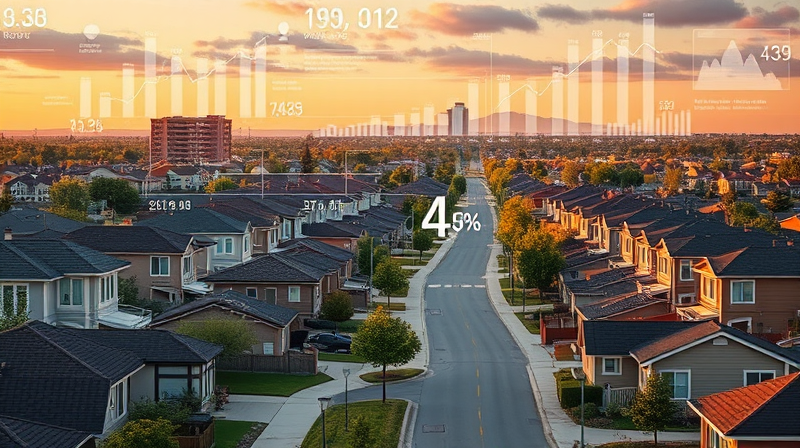Staying informed about your neighborhood's trends and developments is more important than ever in our rapidly evolving world. With abundant data sources available as of 2025, homeowners, investors, and community members have a wealth of tools at their fingertips. Empowering yourself with the right information is key to making decisions that affect where and how you live. This article explores practical methods and resources that allow you to stay updated on neighborhood developments, ensuring you have a clear understanding of your community's dynamics.
Local communities are constantly evolving, and knowing what is happening in your area can give you an edge in decision-making. Whether you are looking to buy a home, invest in property, or simply keep up with local events, understanding the tools available can be a game-changer. In this article, we delve into various data sources and platforms that provide timely and actionable insights on neighborhood trends.
Accessing Reliable Data: Government and Real Estate Resources
One of the most reliable ways to get credible neighborhood data is by using government data sources. The U.S. Census Bureau has recently upgraded its methodologies, launching the Household Trends and Outlook Pulse Survey (HTOPS). This new survey delivers near real-time insights into the social and economic impacts on U.S. households. Its data helps illustrate emerging trends in both national and state levels, offering a broader perspective on shifts in community lifestyles.
Alongside government resources, real estate data platforms have also emerged as crucial tools. CoreLogic's NeighborhoodScout is a comprehensive platform that aggregates neighborhood analytics to provide details on housing market trends, crime rates, educational statistics, and economic indicators. Its ability to forecast market trends over the next three years at a micro-neighborhood level allows users to make strategic decisions and plan for the future.
- Government Data Sources: Access tools like HTOPS for real-time socio-economic insights.
- Real Estate Platforms: Leverage detailed analytics from NeighborhoodScout, including crime and education statistics, housing market trends, and predictive forecasts.
For those who want to stay ahead of any unexpected changes in their neighborhood, combining multiple data sources is essential. With the HTOPS survey and predictive features from real estate platforms, you have a multi-faceted view of your local community.
Enhancing Safety and Community Awareness
Your safety and the safety of your loved ones are paramount. Most neighborhoods experience periods of change that can affect crime rates and overall safety. Platforms like CrimeMapping.com provide a window into the current state of crime in your local area. By extracting data directly from local law enforcement records, you can set up custom alerts that notify you about crime trends and even track movements of sex offenders. This proactive approach to safety ensures that you are always aware of potential issues before they escalate.
In addition to tracking crime, local safety resources like SafeWise offer valuable tools to help assess overall neighborhood safety. These tools include detailed reports on crime statistics and school ratings, giving a clearer picture of what life might look like if you’re considering relocating. By combining information on crime and educational standards, you get a robust understanding of the factors that contribute to a secure community environment.
- Crime Mapping Tools: Utilize resources like CrimeMapping.com to receive real-time crime updates and custom alerts.
- Neighborhood Safety Resources: Tools provided by SafeWise help in evaluating the safety and quality of life in your current or prospective neighborhood.
These technologies not only assist in ensuring your personal safety but also serve as a vital resource for community leaders and local problem solvers who work tirelessly to bring improvements to urban areas.
Understanding Social Mobility and Economic Trends
Another critical aspect of neighborhood development is understanding the social mobility and economic prospects within an area. Tools such as the Opportunity Atlas provide a groundbreaking way to visualize and analyze the potential for upward mobility in nearly 70,000 neighborhoods across America. By diving into the interactive maps, you can see how children in different regions may have varying opportunities to climb the economic ladder.
This data is particularly useful for investors and community organizers who are interested in the long-term prosperity of a neighborhood. When used alongside other data sources like real estate tools and government surveys, the Opportunity Atlas offers a holistic view of both current conditions and future possibilities.
For real estate professionals, tools like the Realtors Property Resource (RPR) offer a unique advantage. RPR consolidates a variety of data points ranging from market trends to demographic information, allowing professionals to create detailed and insightful Neighborhood Reports. These reports are indispensable for conducting thorough analyses of potential investments as well as for advising clients on where to buy or sell properties.
- Social Mobility Data: The Opportunity Atlas maps out economic and social pathways for neighborhoods, offering strategic insights for long-term planning.
- Real Estate Professional Tools: RPR provides comprehensive reports that detail everything from housing market conditions to local economic indicators.
While no single data source can paint the complete picture, cross-referencing multiple resources ensures that you receive a well-rounded view of your neighborhood. This multi-source strategy not only increases the reliability of your information but also empowers you to make decisions that reflect both current trends and future developments.
By developing a habit of continuously tracking these diverse data points, you'll be better equipped to navigate any changes in community dynamics. The blend of government data, real estate analytics, crime mapping, and social mobility insights creates a resilient framework for understanding neighborhood developments.
Ultimately, the key takeaway is that staying informed involves leveraging a combination of modern tools and trusted sources. Whether you are an active community member, a savvy investor, or a proactive homeowner, these practical methods will help you take charge of your future and foster a stronger, safer, and more vibrant neighborhood.








